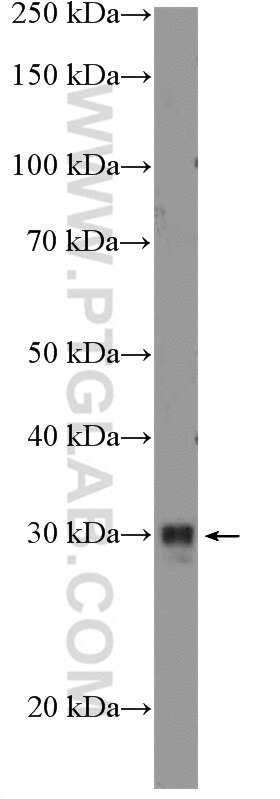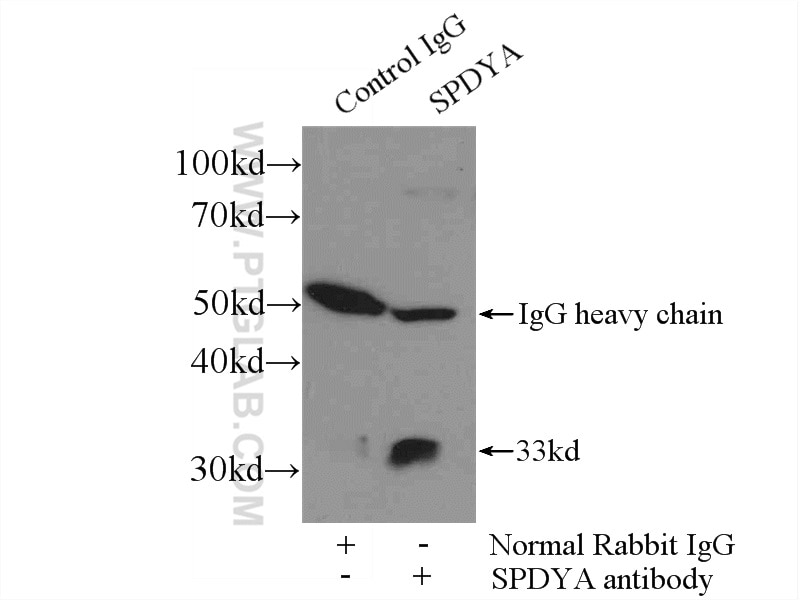Anticorps Polyclonal de lapin anti-SPDYA
SPDYA Polyclonal Antibody for WB, IP, ELISA
Hôte / Isotype
Lapin / IgG
Réactivité testée
Humain, rat, souris
Applications
WB, IP, ELISA
Conjugaison
Non conjugué
N° de cat : 17836-1-AP
Synonymes
Galerie de données de validation
Applications testées
| Résultats positifs en WB | cellules Neuro-2a, |
| Résultats positifs en IP | tissu testiculaire de souris |
Dilution recommandée
| Application | Dilution |
|---|---|
| Western Blot (WB) | WB : 1:200-1:1000 |
| Immunoprécipitation (IP) | IP : 0.5-4.0 ug for 1.0-3.0 mg of total protein lysate |
| It is recommended that this reagent should be titrated in each testing system to obtain optimal results. | |
| Sample-dependent, check data in validation data gallery | |
Informations sur le produit
17836-1-AP cible SPDYA dans les applications de WB, IP, ELISA et montre une réactivité avec des échantillons Humain, rat, souris
| Réactivité | Humain, rat, souris |
| Hôte / Isotype | Lapin / IgG |
| Clonalité | Polyclonal |
| Type | Anticorps |
| Immunogène | SPDYA Protéine recombinante Ag12041 |
| Nom complet | speedy homolog A (Xenopus laevis) |
| Masse moléculaire calculée | 313 aa, 36 kDa |
| Poids moléculaire observé | 33 kDa |
| Numéro d’acquisition GenBank | BC093005 |
| Symbole du gène | SPDYA |
| Identification du gène (NCBI) | 245711 |
| Conjugaison | Non conjugué |
| Forme | Liquide |
| Méthode de purification | Purification par affinité contre l'antigène |
| Tampon de stockage | PBS with 0.02% sodium azide and 50% glycerol |
| Conditions de stockage | Stocker à -20°C. Stable pendant un an après l'expédition. L'aliquotage n'est pas nécessaire pour le stockage à -20oC Les 20ul contiennent 0,1% de BSA. |
Informations générales
SPDYA, also named as SPDY1, SPY1 and RINGO A, is a cell cycle regulator which regulates the G1/S phase transition of the cell cycle by binding and activating CDK1, CDK2 and CDKN1B/KIP. It has two isoforms with MW 33 kDa and 36 kDa.
Protocole
| Product Specific Protocols | |
|---|---|
| WB protocol for SPDYA antibody 17836-1-AP | Download protocol |
| IP protocol for SPDYA antibody 17836-1-AP | Download protocol |
| Standard Protocols | |
|---|---|
| Click here to view our Standard Protocols |



